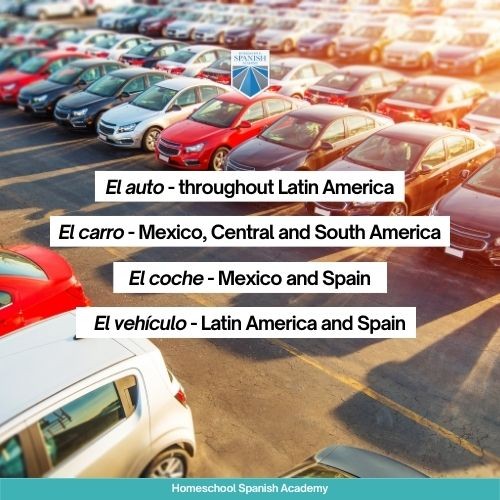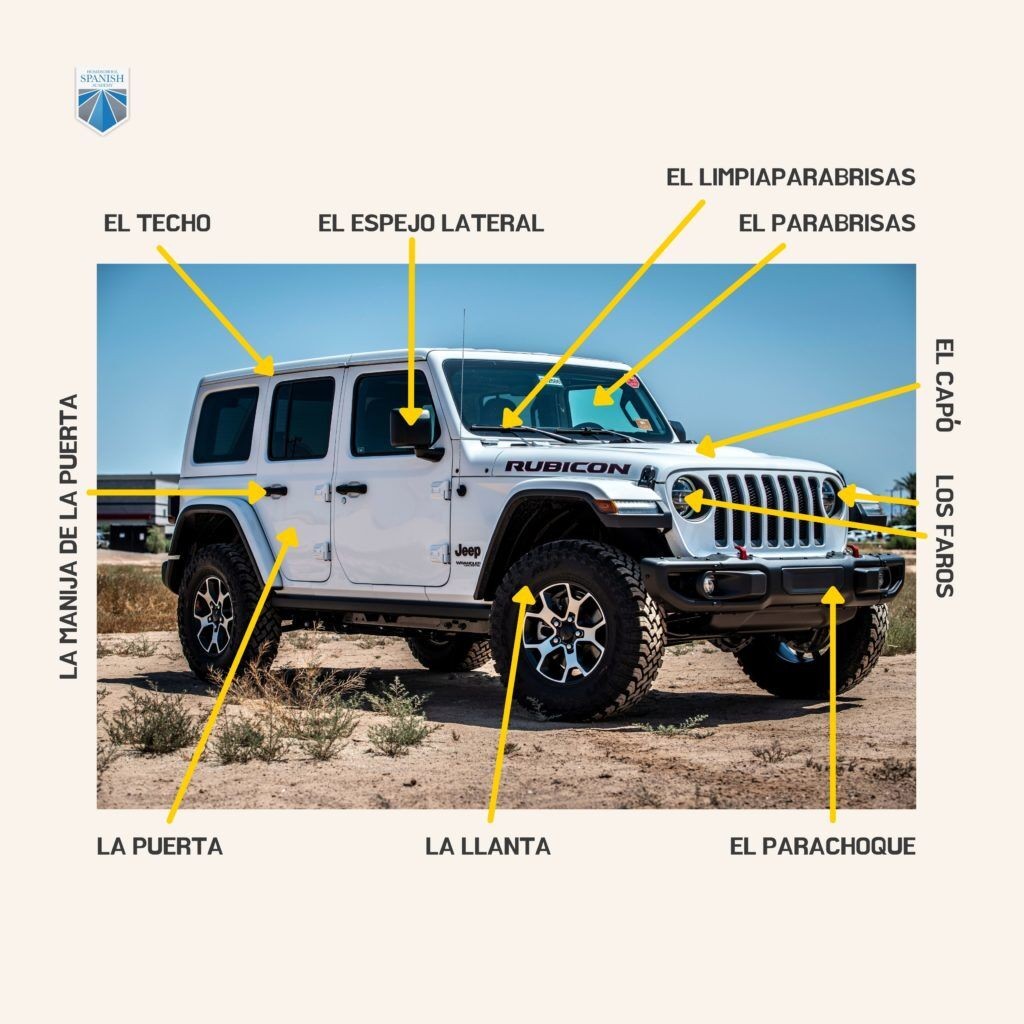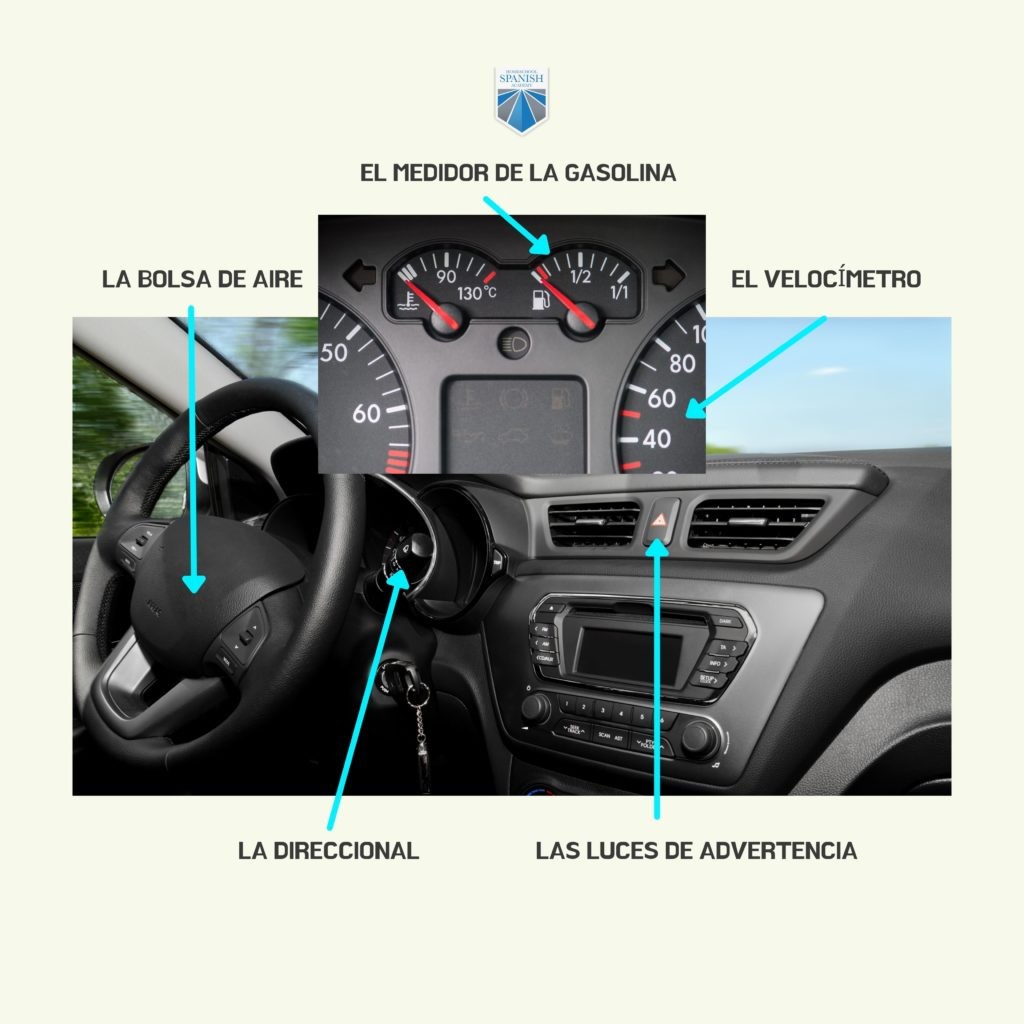Understanding the names of car parts is essential knowledge for vehicle owners, car enthusiasts, and anyone involved in the automotive industry. Whether you’re discussing maintenance with a mechanic, looking to perform DIY repairs, or simply expanding your automotive vocabulary, knowing the correct terminology is crucial. This comprehensive guide provides a visual breakdown of car parts, covering everything from the interior comforts to the engine’s core components.
Exploring Car Part Names
The term “car” itself is widely used, but you might also hear terms like “automobile” or “vehicle.” Regardless of the term, understanding the components is key. Let’s break down the car into sections to explore the names of its parts effectively.
Inside the Car: Interior Car Parts
The car interior is where drivers and passengers interact most directly with the vehicle. Familiarity with these car parts names is important for everyday driving and comfort.
| English | Function |
|---|---|
| Accelerator Pedal | Controls the car’s speed by regulating fuel flow to the engine. |
| Brake Pedal | Applies the brakes to slow down or stop the vehicle, crucial for safety. |
| Clutch Pedal | (Manual transmissions) Disengages the engine from the transmission to allow gear changes. |
| Gear Stick/Shifter | Selects different gears in manual and automatic transmissions to control speed and power. |
| Glove Compartment | A storage space built into the dashboard, often used for documents and small items. |
| Handbrake/Parking Brake | A manually operated brake to keep the vehicle stationary when parked, especially on inclines. |
| Horn | A sound signaling device used to alert other drivers or pedestrians. |
| Floor Mats | Protective coverings for the car’s floor, trapping dirt and debris for easy cleaning. |
| Rearview Mirror | Provides a view of the road and traffic directly behind the vehicle. |
| Seatbelt | A safety restraint designed to secure occupants in their seats and minimize injury in a collision. |
| Seats | Provide seating for the driver and passengers, designed for comfort and support. |
| Steering Wheel | Used to control the direction of the vehicle by turning the front wheels. |
| Power Steering | System that assists steering, making it easier to turn the steering wheel, especially at low speeds. |



Outside the Car: Exterior Car Parts
Exterior car parts are what we see from the outside and include both functional and aesthetic components. Knowing these car parts names helps in describing damage or requesting specific repairs.
| English | Function |
|---|---|
| Bumper | Front and rear protective bars designed to reduce damage in low-speed collisions. |
| Door Handles | Used to open and close the vehicle’s doors, allowing access to the interior. |
| Doors | Hinged panels that provide entry and exit to the vehicle’s cabin. |
| Front and Back Fenders | Body panels that surround the wheel wells, protecting the car from road debris and reducing spray. |
| Grill | Front decorative and functional panel that allows air to flow to the radiator and engine while protecting them. |
| Headlights | Powerful front lights that illuminate the road ahead for safe driving at night or in low visibility. |
| Hood/Bonnet | Hinged cover over the engine compartment, providing access for maintenance and repairs. |
| Hubcaps/Wheel Covers | Decorative covers for the center of the wheels, enhancing appearance and protecting wheel nuts. |
| Indicator Lights/Turn Signals | Flashing lights on the front, sides, and rear to indicate the driver’s intention to turn or change lanes. |
| License Plate | Official identification plate attached to the front and rear of the vehicle, legally required for vehicle identification. |
| Side Mirrors/Wing Mirrors | Mirrors mounted on the exterior doors, providing visibility of the sides and rear of the vehicle. |
| Roof | The top panel of the car, providing structural integrity and protection from weather. |
| Sunroof/Moonroof | An opening in the car roof that can be opened to let in light and fresh air. |
| Tail Light | Rear lights that indicate the vehicle’s presence, position, and braking, essential for rear visibility. |
| Trunk/Boot | Rear storage compartment for luggage and cargo, typically accessed from the rear of the vehicle. |
| Wheels | Circular components that allow the vehicle to move by rotating, typically fitted with tires. |
| Windows | Transparent panels in the car body that allow visibility and light into the cabin. |
| Windshield/Windscreen | Large front window designed to provide a clear forward view for the driver and protect occupants from wind and debris. |
| Windshield Wipers | Mechanical arms with rubber blades that sweep across the windshield to remove rain, snow, and debris, ensuring clear vision. |
Under the Hood: Essential Engine and Mechanical Car Parts
Understanding the car parts names under the hood is crucial for anyone interested in car mechanics or maintenance. These components are the heart of your vehicle’s operation.
| English | Function |
|---|---|
| Air Filter | Cleans the air entering the engine, removing dust and particles to prevent engine wear and ensure efficient combustion. |
| Alternator | A generator that recharges the battery and powers the electrical system while the engine is running. |
| Battery | Provides the initial electrical power to start the engine and powers electrical components when the engine is off. |
| Belt (Serpentine Belt/Drive Belt) | A rubber belt that drives multiple engine accessories like the alternator, power steering pump, and air conditioning compressor. |
| Camshaft | Controls the opening and closing of the engine’s valves, synchronizing intake and exhaust processes. |
| Carburetor | (Older vehicles) Mixes air and fuel for combustion in the engine (largely replaced by fuel injection). |
| Catalytic Converter | Reduces harmful emissions from the exhaust gases by catalyzing chemical reactions to convert pollutants into less harmful substances. |
| Ignition Coil | Transforms the battery’s low voltage into the high voltage needed to create a spark at the spark plugs to ignite the air-fuel mixture. |
| Combustion Chamber | The space in the engine cylinder where the air-fuel mixture is burned to produce power. |
| Crankshaft | Converts the linear motion of the pistons into rotary motion, which is then transmitted to the wheels to drive the vehicle. |
| Fuel Pump | Pumps fuel from the fuel tank to the engine, ensuring a constant supply for combustion. |
| Ignition System | The system that initiates the combustion process in the engine cylinders, typically using spark plugs. |
| Piston Rod/Connecting Rod | Connects the piston to the crankshaft, transmitting the force of combustion to the crankshaft. |
| Pulley | A grooved wheel that helps transmit power via belts to various engine components. |
| Radiator | Cools the engine coolant, preventing the engine from overheating by dissipating heat into the air. |
| Exhaust Valve | Controls the release of exhaust gases from the combustion chamber after the combustion cycle. |
| Thermostat | Regulates the engine’s temperature by controlling the flow of coolant to the radiator, maintaining optimal operating temperature. |
| Vacuum Diaphragm | Used in various engine control systems to regulate vacuum pressure for functions like fuel delivery and ignition timing. |
| Valve (Intake/Exhaust) | Controls the flow of air and fuel into the combustion chamber (intake valve) and the expulsion of exhaust gases (exhaust valve). |
| Voltage Regulator | Maintains a constant voltage level in the vehicle’s electrical system, protecting components from voltage spikes. |
Instrument Panel: Dashboard Car Parts
The instrument panel, or dashboard, houses crucial gauges and indicators that provide the driver with real-time information about the vehicle’s operation. Knowing these car parts names is vital for monitoring your car’s health while driving.
| English | Function |
|---|---|
| Airbag | A safety device that inflates rapidly in a collision to cushion occupants and reduce injury. |
| Fuel Gauge | Indicates the amount of fuel remaining in the fuel tank, helping drivers know when to refuel. |
| Speedometer | Displays the vehicle’s current speed, usually in miles per hour (MPH) or kilometers per hour (km/h). |
| Turn Signal Indicator | Visual confirmation on the dashboard that the turn signals are activated, flashing in sync with the exterior lights. |
| Warning Lights | Illuminated symbols that alert the driver to potential problems or malfunctions in the vehicle’s systems, such as engine issues, low oil pressure, or brake problems. |
Actions Related to Car Parts: Essential Verbs
Beyond just car parts names, understanding verbs associated with car operation and maintenance is equally important. These actions are part of everyday driving and vehicle care.
| English Verb | Description |
|---|---|
| To Accelerate | To increase the speed of the vehicle by pressing the accelerator pedal. |
| To Brake | To slow down or stop the vehicle by applying the brake pedal. |
| To Reverse/Back Up | To move the vehicle backward, typically by selecting the reverse gear. |
| To Change Lanes | To move the vehicle from one lane to another on a multi-lane road. |
| To Fasten Seatbelt | To secure the seatbelt across your body before driving for safety. |
| To Refuel/Fill Up the Tank | To add gasoline or diesel to the vehicle’s fuel tank. |
| To Park | To stop and leave the vehicle in a designated parking space or area. |
| To Run Out of Fuel | To deplete the vehicle’s fuel supply, causing the engine to stop. |
| To Slow Down | To decrease the speed of the vehicle, usually by easing off the accelerator or applying the brakes gently. |
| To Speed Up | To increase the speed of the vehicle, typically by pressing the accelerator pedal further. |
| To Start a Car/Ignite the Engine | To begin the engine’s operation, usually by turning the ignition key or pressing a start button. |
| To Stop a Car | To bring the vehicle to a complete halt using the brakes. |
Expand Your Automotive Knowledge
Knowing the Car Parts Names And Pictures is more than just vocabulary; it’s about gaining a deeper understanding of how your vehicle works and communicating effectively about it. Whether you’re a seasoned car enthusiast or a new driver, this visual guide is designed to enhance your automotive literacy. Continue exploring and learning about the fascinating world of cars to become a more informed and confident vehicle owner.
Nicole Canún
Freelance Writer at [carparteu.com] (assuming carparteu.com is the new website)
Automotive content creator and enthusiast. Passionate about cars and explaining their intricacies. Dedicated to making car knowledge accessible to everyone.
Latest posts by Nicole Canún (see all) (adjust URL as needed)